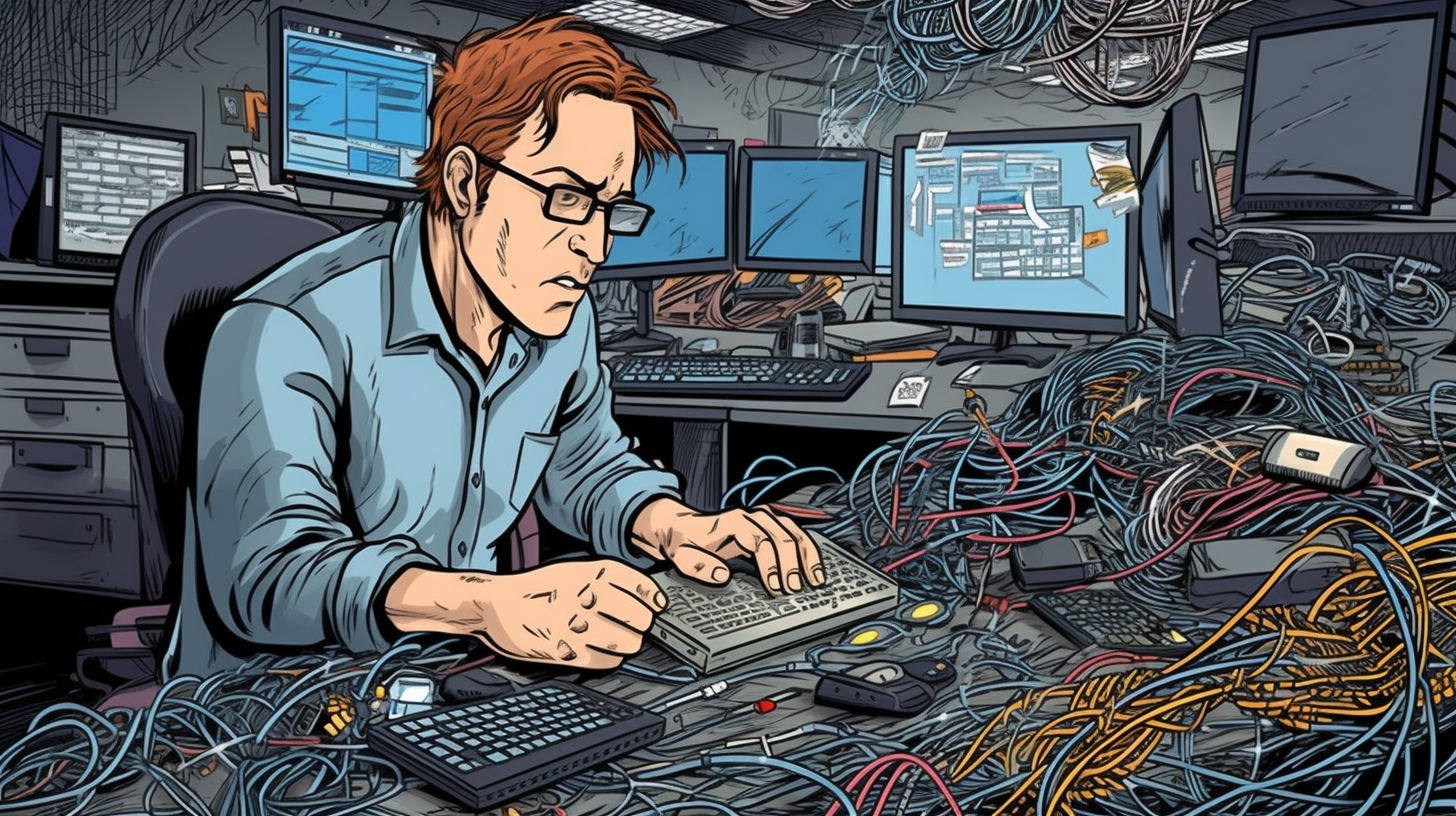Mastering the Maze: Troubleshooting Common Cable Connectivity Issues and Selecting the Appropriate Tools

Well, folks, we must acknowledge we've all walked in these shoes before. Just as you're about to enjoy your well-earned break, that familiar chime rings out. It's an emergency, they say! Employees can’t connect to the internet, and it's chaos! The culprit? Cable connectivity issues. As CompTIA Network+ (N10-008) exam candidates, your job is to troubleshoot and resolve these pesky problems promptly, using the right set of tools. So, sit tight, grab a cup of joe, and let's hit the road through this labyrinth of cable connectivity issues.
Academic Discourse: Connectivity Issues & Troubleshooting
In a more formal and academic context, cable connectivity issues are typically the result of physical or logical faults within a network’s cabling system. Physical faults often pertain to issues such as cable degradation, improper connector termination, and substandard cable quality. Logical faults, on the other hand, are more enigmatic and are usually related to incorrect configurations, compatibility issues, or network traffic congestion.
Troubleshooting these problems demands both analytical skills and specialized knowledge. Candidates preparing for the CompTIA Network+ (N10-008) exam should be able to understand and interpret the symptoms of a connectivity issue, identify the affected network segment, and evaluate possible causes systematically. You can face issues as simple as loose connectors or damaged cables, or wrestle with complex problems like interference from nearby devices or errors in network configuration.
The Real Deal: Statistics about Connectivity Issues
Now, here comes the punchline! According to a study conducted by Fluke Networks, about 65% of cable faults in enterprise networks can be traced back to improper installation or termination procedures, and around 20% are due to poor-quality cables or connectors. Another survey by CompTIA found that nearly 30% of network downtime in small to medium-sized businesses was due to cabling issues. So folks, going by the numbers, troubleshooting cable connectivity issues isn't just a test topic; it's real-world practical stuff that matters!
Choosing the Right Tools for the Job
You wouldn't use a sledgehammer to crack a nut, now would you? It’s the same idea with troubleshooting connectivity issues; the correct tools are crucial for effective diagnosis and resolution. A cable tester, for instance, can test the electrical connections in a cable, particularly useful for identifying open circuits, short circuits, or reversed connections. A time-domain reflectometer (TDR) can locate a break or fault in the cable, while a multimeter can measure the electrical continuity of a circuit.
When dealing with logical issues, software tools like a network analyzer or a packet sniffer become essential. They use their power to observe and analyze network traffic, thereby enabling the troubleshooter to identify bottlenecks or misconfigurations. You use network monitoring tools to illuminate the overall health and performance of the network, which makes you identify potential connectivity issues more efficiently.
Remember, choosing the right tools for your toolbox isn't your only job; you need to understand the problem at hand, familiarize yourself with your tools, and determine the best tool to use for each specific issue. And no, my dear readers, trial-and-error isn’t an option when the company network is on the line!
In conclusion, the ability to troubleshoot common cable connectivity issues and select the appropriate tools is a vital skill for any network professional preparing for the CompTIA Network+ (N10-008) exam. But more importantly, it’s a sauce for real-world success in handling network emergencies, ensuring business continuity, and becoming the go-to guru when the network hits the fan!